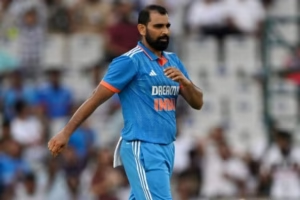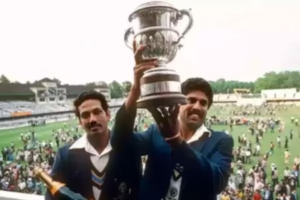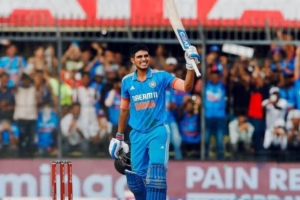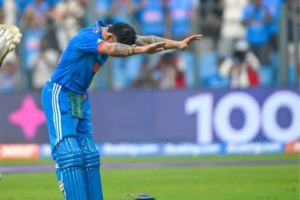Top 5 Legendary World Cup Performances: Cricketing Icons Who Shone Bright in Past World Cups
By Aayush Pathak October 1, 2023
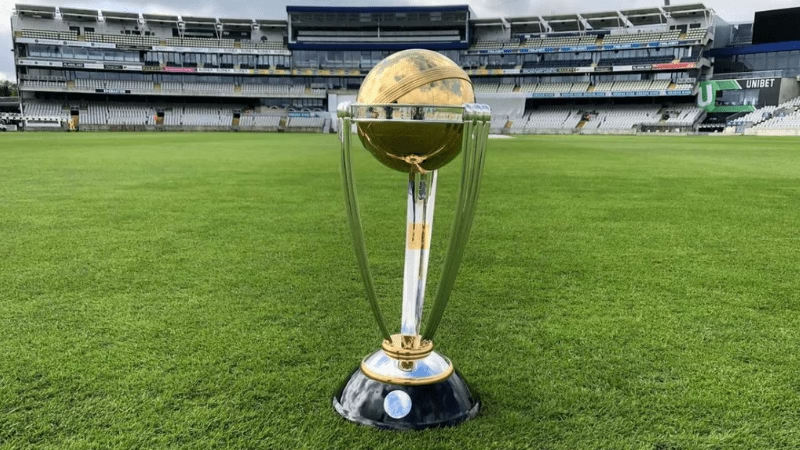
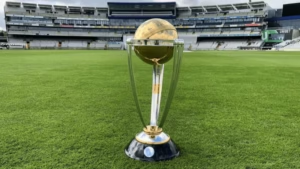
The ICC Cricket World Cup is a stage where players from various nations exhibit their skills and determination. Over the years, the ICC Cricket World Cup has witnessed remarkable performances that have carved a special place in the hearts of cricket enthusiasts worldwide.
In this article, we will delve into the top 5 legendary World Cup performances by cricketers who delivered standout displays in past World Cups. These unforgettable moments not only elevated these players to iconic status but also left an indelible mark on the history of the sport.
Kapil Dev,1983 World Cup

The 1983 Cricket World Cup in England will forever be etched in the memories of cricket fans as the moment when India won its first-ever World Cup. At the heart of this historic triumph was Kapil Dev, the charismatic Indian all-rounder, and captain. Kapil Dev’s innings of 175 not out against Zimbabwe is the stuff of legends. Coming in at a precarious 17/5, he played an innings of sheer brilliance, displaying remarkable grit and determination. He single-handedly took the Indian team to a total of 266/8, setting the stage for an improbable victory.
Throughout the tournament, Kapil Dev consistently troubled batsmen with his swing and seam movement. He had a knack for picking up crucial wickets at crucial moments, often breaking partnerships and providing breakthroughs for the Indian team. His ability to swing the ball late and extract movement off the pitch made him a potent threat, even on flat surfaces.
India went on to win the final that year, and Kapil Dev’s inning remains the highlight of the entire tournament. Kapil Dev’s captaincy style during the 1983 Cricket World Cup was characterized by his unwavering determination and astute decision-making. As the leader of the Indian team, he instilled a sense of belief and unity among his players, which played a crucial role in their historic triumph.
Sir Vivian Richards, 1979 World Cup

Sir Vivian Richards, the West Indian batting maestro, left an indelible mark on the 1979 Cricket World Cup with his scintillating form and aggressive approach. Throughout the tournament, Richards showcased his exceptional batting skills, establishing himself as one of the greatest ODI batsmen of all time. In the four matches he played in the 1979 World Cup, Richards amassed a total of 217 runs at an astonishing average of 108.00.
His consistency and ability to score runs at a rapid pace made him a formidable force for opposing teams. Richards’ performances were not only impactful but also played a crucial role in the West Indies’ successful campaign. However, it was Richards’ innings in the final against England that truly etched his name in cricketing folklore. Coming in at a time when the West Indies were in a precarious position, Richards played a fearless and dominating knock of 138 not out. His aggressive approach and ability to dismantle the English bowling attack were unparalleled.
Richards’ inning propelled the West Indies to a formidable total of 286/9, a score that proved insurmountable for the opposition. His ability to score runs at a brisk pace, combined with his impeccable shot selection, made him a nightmare for the English bowlers. Richards’ innings was a masterclass in power-hitting, as he effortlessly dispatched the ball to all parts of the ground.
What set Richards apart was not just his ability to score runs but also his aura of confidence and fearlessness. He exuded a sense of authority and dominance, which had a demoralizing effect on the opposition. Richards’ aggressive approach not only put the bowlers on the back foot but also inspired his teammates, creating a winning mentality within the West Indian team.
Rohit Sharma, 2019 World Cup

Rohit Sharma’s performance in the 2019 Cricket World Cup for India was truly exceptional, as he consistently delivered match-winning performances throughout the tournament. Opening the batting, Rohit showcased his remarkable ability to adapt to different conditions and opponents, making him a standout player.
One of the most remarkable aspects of Rohit Sharma’s campaign in the 2019 World Cup was his record-breaking five centuries. He became the first player in the history of the tournament to achieve this feat in a single edition. Each of his centuries was a testament to his skill, temperament, and ability to perform under pressure.
Rohit’s ability to score big runs and convert his starts into substantial innings was a key factor in India’s success. His total of 648 runs in the tournament earned him the title of the highest run-scorer. His consistency at the top of the order provided a solid foundation for the Indian team and allowed the middle order to play with freedom.
What made Rohit Sharma’s performances even more impressive was his ability to anchor the innings when required and accelerate the scoring rate when needed. He displayed a remarkable understanding of the game situation and adjusted his approach accordingly. Whether it was building partnerships or launching a counter-attack, Rohit’s batting prowess was a joy to watch.
Shane Warne, 1999 World Cup

Shane Warne, the Australian leg-spin wizard, left an indelible mark on the 1999 Cricket World Cup, a tournament that showcased his exceptional bowling prowess and played a pivotal role in Australia’s triumph that year. Throughout the competition, Warne’s performances were nothing short of spellbinding, and one particular match, the final against Pakistan, stands out as an epitome of his unparalleled skills as a spinner.
In that crucial final encounter, Warne delivered a performance that left cricket enthusiasts around the world in awe. His figures of 4/33 were not just impressive; they were game-changing. Facing a formidable Pakistan side, Warne’s ability to turn the ball sharply and deceive batsmen with his subtle variations was on full display. He spun a web around the opposition, making every delivery a potential threat. As a result of his remarkable bowling, Pakistan was restricted to a modest total of 132, setting the stage for Australia’s emphatic victory in the final.
But Warne’s impact on the 1999 Cricket World Cup extended far beyond that pivotal semi-final. Across the tournament, he showcased his immense talent and consistency, finishing as the joint-highest wicket-taker of the competition with a tally of 20 wickets from 10 matches. His ability to consistently take wickets and provide breakthroughs for his team made him an invaluable asset for Australia.
Sachin Tendulkar, 2003 World Cup

Sachin Tendulkar, often referred to as the “Little Master,” stands as one of the greatest batsmen in the history of cricket. His legendary performance in the 2003 Cricket World Cup showcased his extraordinary consistency and sheer brilliance with the bat, setting him apart as a cricketing icon.
In a crucial group-stage match against their arch-rivals, Pakistan, Tendulkar delivered a masterful innings that will forever be etched in the annals of cricket history. Scoring 98 runs, he displayed an exceptional ability to dominate the Pakistani bowling attack, which featured some of the finest bowlers of that era. His inning was a testament to not only his unparalleled skill but also his unwavering temperament under pressure. The match concluded with India emerging victorious, and Tendulkar’s performance was rightfully hailed as one of the greatest moments in the storied history of India-Pakistan cricketing clashes.
Tendulkar’s impact in the 2003 Cricket World Cup extended well beyond that iconic innings against Pakistan. Throughout the tournament, he exhibited a level of consistency and excellence that was truly remarkable. In fact, he amassed a staggering 673 runs during that season, making him the highest run-scorer across all editions of the Cricket World Cup in a single season. His ability to perform consistently at the highest level of the game was a testament to his unparalleled skill and dedication.
Sachin Tendulkar not only finished as the tournament’s leading run-scorer but also played a pivotal role in taking the Indian team to the final of the 2003 Cricket World Cup. Though India eventually fell to the formidable Australian side in the final, Tendulkar’s contributions had already left an indelible mark on the tournament.
Stay updated with all the cricketing action, follow Cricadium on Facebook, Twitter, and Instagram
You might also like
Recommended to you



